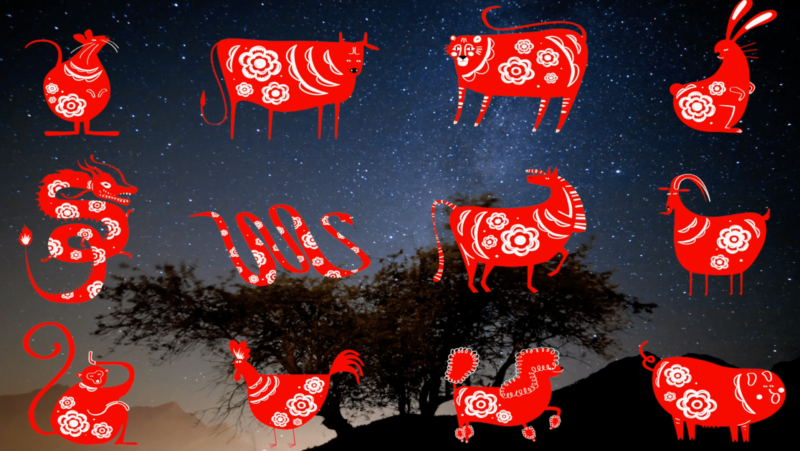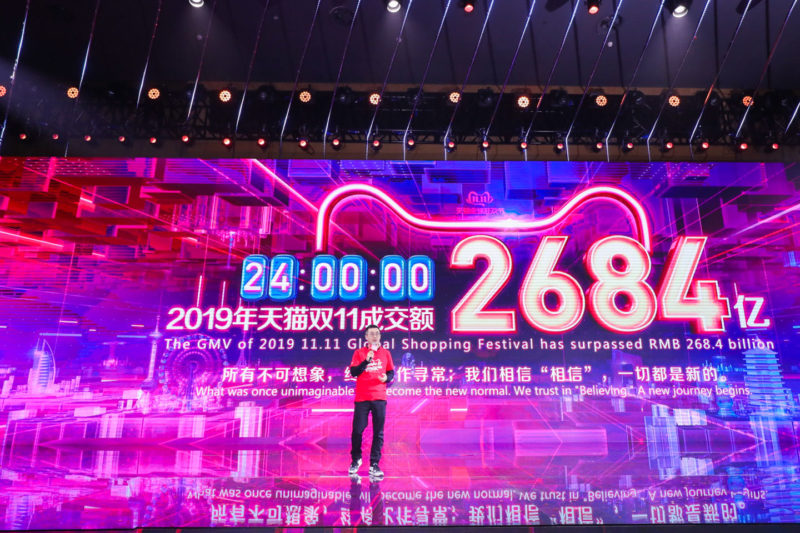In the run-up to International Women’s Day, the Dao team spoke to marketing tech expert Bessie Lee about the pressures that women face in China and how brands can best engage with female Chinese consumers.

Bessie Lee is the Founder and CEO of Withinlink, a China-based startup incubator and early-stage venture fund focused on marketing technology that supports China’s media communications industry. Prior to founding her own company, she served as CEO of WPP China and of GroupM China.
She has received a number of international awards for her contributions to the media industry and was honoured as one of the 29 most inspiring women in digital, a prestigious recognition and an important symbol for female empowerment at and by Dmexco, The Female Quotient and Refinery29 in 2017. Read more about Bessie here.
How has China’s #Metoo movement been different from in the West?
Several aspects of the movements are different. The West’s #Metoo movement was the culmination of a long history of women fighting for their equality and voting rights. However, while women suffer from similar problems of gender inequality, sexual harassment etc., China didn’t go through the same journey. When #Metoo started in China, it overwhelmingly took place from a practical lens, rather than a philosophical angle.
Another difference is how the movement is hashtagged. Instead of using #Metoo, the participants in China used a homophone to ‘Me Too’ in Chinese, the word for rice, mǐ米, and rabbit, tù 兔. So, ‘rice rabbit’ became used to express opinions about #Metoo. The tweak of words and sound made the hashtag interesting and fun. Participants also used emojis ?? in the hashtag rather than #Metoo as a way of attracting people’s attention to the movement on social media.
From your experience working in China and with Chinese consumers, what should brands understand about marketing to women in China?
“The way in which the majority of female consumers under the age of 40 have been brought up is unique because they are products of the one-child policy.”
The way in which the majority of female consumers under the age of 40 have been brought up is unique because they are products of the one-child policy. As a result, parents and grandparents pooled all their resources together to help their only child succeed. A consequence of this is that Chinese women of this generation have grown up with confidence, dignity and pride.
Brands need to be careful when marketing to these female consumers, otherwise, they risk treading on a landmine that they don’t understand. For example, the Chinese make up remover brand Purcotton released a campaign showing a woman walking home at night followed by a masked man. On taking out a wipe and removing her makeup, the stalker runs away. It didn’t go down at all well with Chinese consumers. Purcotton didn’t understand their female audience and produced an insincere apology which got them into even more trouble.
“The short life of brand and marketing history in China and the numerous choices available to consumers mean that they switch brands very easily.”
The consumer preferences and behaviours of Chinese female consumers are very different from their counterparts in the West. The short life of brand and marketing history in China and the numerous choices available to consumers mean that they switch brands very easily. Therefore, brands that upset Chinese consumers can lose them for a long time before earning them back.
Are there major differences in mindsets, depending on where in China they are located, I.e. tier 1 vs tier 5?
Women in first-tier cities are very different from those in lower-tier cities. Brands need to compartmentalise the market, decide which segment or tier they want to target and study that consumer group in depth.
In the last year, were there any campaigns that stood out to you in how they portray women and female empowerment both in China and globally?
“Women lingerie brand Neiwai’s campaign left a strong impression on me because it featured real women rather than models.”
Women lingerie brand Neiwai’s campaign left a strong impression on me because it featured real women – older women, women with stretch marks and tattoos – rather than models. It’s great to see that kind of campaign emerge, especially in China and from a Chinese brand. It shows that brands and society are moving away from the superficial portrayal of women toward a more realistic one.
What should brands do to target their Chinese female consumer base for occasions such as International Women’s Day?
A lot of brands focus on very superficial campaigns, such as shopping days, which unfortunately is what International Women’s Day has somewhat become. The focus is on getting women spending through discounts, special packages and other promotions. Other than Neiwai, I’ve seen few brands use the opportunity to get their voice heard and dig deeper into the topic.
How many Chinese women do you think actually identify with the image of a more liberated and independent woman which has been depicted in several TV shows and discussed considerably online in the last year?
Sisters Who Make Waves, a reality show featuring women aged over 30, became a top hit because it went against what people were used to, i.e. women in their early/mid-20s taking a leading role in TV shows. The women’s confidence in themselves and their body, because of their age, is what attracted viewers. On social media, a lot of young women commented that they wish for that level of confidence. They don’t necessarily identify with the image, but these shows act as a form of inspiration or a source of aspiration.
Groups of Chinese consumers have developed a ‘cancel culture’ toward brands or celebrities that they don’t agree with (as with the ‘easily married style’ Weibo storm). Should brands be worried about this?
“Brands should be worried about cancel culture. Ultimately, they will be spotted and punished by consumers if they are pushing a superficial image.”
Brands should be worried about cancel culture: ultimately, they will be spotted and punished by consumers if they are pushing a superficial image. Many international brands have made these kinds of mistakes – promoting stereotypes or a false image about Chinese consumers – which represent their arrogance in approaching Chinese consumers.
Currently, most marketing campaigns are very face value or superficial. If brands don’t put in the effort, then they’re not going to get much in return from consumers, or they will have a one-off success that won’t sustain them in the market.
What is the risk for brands if they evoke traditional stereotypes about gender roles? Or are too outspoken about women’s rights?
“Young Chinese women are now at a stage where they want to explore life, develop their confidence and find a core that they can resonate with.”
It comes down to which segment you’re targeting. As mentioned earlier, most young Chinese women grew up with their family’s resources being focused on them. They are now at a stage where they want to explore life, develop their confidence and find a core that they can resonate with.
Due to some historical events, there is a gap between tradition and heritage. In recent years, there has been a growing discussion on all sorts of media in China about revisiting tradition. But what is that tradition? Is it Confucianism? Is it Taoism?
For Chinese consumers, this journey is completely new and multifaceted but the central theme is that people want to revisit tradition. So, it’s certainly not the case that tradition is bad, rather the opposite – what can we extract from tradition and apply to the modern-day. It’s not an easy exercise and there are other conflicts that enter the mix, such as influence from the West.
“It’s certainly not the case that tradition is bad, rather the opposite – what can we extract from tradition and apply to the modern-day.”
Due to all these factors, China is a tough market. I only half agree with the statement that China is ‘different’: it has commonalities with the rest of the world but is also very unique. As a result, brands can’t just replicate what they’ve done elsewhere and need to spend money investigating China and Chinese consumers. A lot of local Chinese brands are currently offering exciting products and opportunities. International brands also need to be willing to be bold and to experiment if they want to avoid running into a big challenge from local competitors.
What trends do you expect to see from brands targeting Chinese female consumers in 2021?
The lower-tier market and the 50+ consumer group are goldmines that very few brands are paying attention to.
Lower-tier cities have a huge potential for growth but brands will struggle because they don’t understand female consumers in these areas. The 50+ age group in China has a very high consumption power because of their lifetime savings, and many are ‘empty nesters’ with no dependents that rely on them. Due to the huge improvements in health and nutrition, these consumers are still in their prime and have a wealth of information and digital resources at their fingertips. However, they are overlooked as brands focus on the 18-45 age range because anyone who is older than 45 is considered ‘dead’ in marketing terms.
“A brand’s next copy may even be hidden in social media discussions so it is vital to extract consumer language from social channels.”
Currently, brands are limiting themselves by demographic and age, and are therefore restricting their growth. Brands that are bold enough to change their briefing terminology, the way in which they define the market and consumers, will be rewarded.
In order to market to these ‘new’ groups, brands should use technology research companies that can produce China-wide research very quickly and that have a set solution to track and monitor discussions on social media. Understanding how consumers perceive a brand and the language that they use to describe it is key to ensuring a brand’s creative copy appeals to its audience. Indeed, a brand’s next copy may even be hidden in social media discussions, and so, it is vital to extract consumer language from social channels and user-generated content.
There are many tensions regarding women’s position in the workplace and within family life in China. On the one hand, China has one of the highest rates of female participation in the labour force in the Asia-Pacific region, yet, there is still a considerable gender wage gap, discrimination related to pregnancy, and women carry out the majority of unpaid care work. How do you think this will change over the next ten years?
“If the STEM sector continues to be disproportionately male-dominated, there will be a massive misalignment between who produces devices and the end-users.”
Companies need to encourage women to take more senior positions in business because a lot of women erect a glass ceiling themselves due to a lack of confidence. Women need to encourage each other and give support to those who are running into similar obstacles and challenges that they have faced.
We also need to encourage young girls at school to fight stereotypes and enter imbalanced sectors, such as STEM subjects. The majority of engineers and coders are men and they are writing algorithms in the way that they think or intend to use a product. In the future, there will be more and more interaction between humans and technology. If this sector continues to by disproportionately male-dominated, there will be a massive misalignment between who produces devices and the end-users.
If you enjoyed this article and want to contribute a piece to Dao, please get in touch with the team at [email protected]
Read more:









